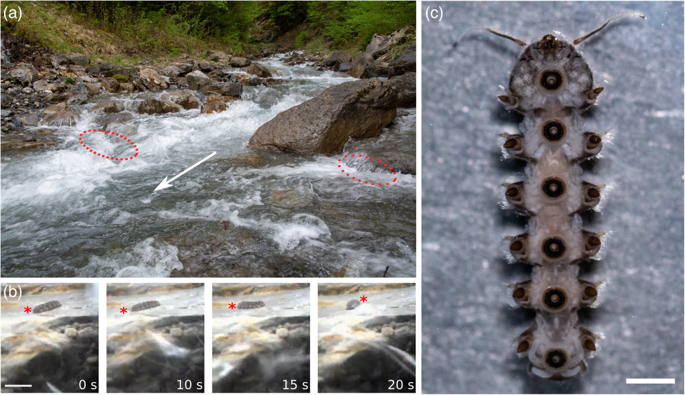Many tiny creatures in the natural world face living in fast flows. The larvae of the net-winged midge, for example, forage their way through fast-flowing Alpine springs with speeds of 3 m/s or more. You or I would find standing in such water a challenge, but these larvae are unbothered, thanks to the clever suction-cup-like appendages that help anchor them to rough rocks.
The larvae generate their strong attachment with an outer rim flexible enough to conform to uneven surfaces. When they activate the central piston of the suction cup, this creates a seal strong enough to withstand forces up to 600 times the larvae’s body weight. But holding on to one spot forever is hardly useful, so the larvae also have a V-shaped notch in the cup controlled by dedicated muscles. When activated, this quickly breaks the seal, allowing the larvae to relocate. (Image and research credit: V. Kang et al.; via The Engineer; submitted by Marc A.)



